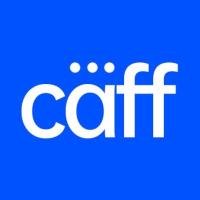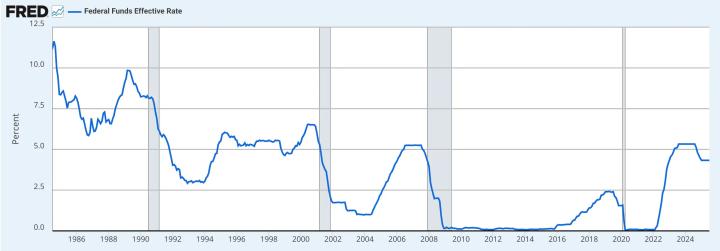
Arc not only supports USDC but also allows the use of multiple stablecoins as fee tokens, including stablecoins pegged to other national currencies, deposit tokens, and central bank digital currencies. This functionality is associated with Circle's payment custody service.
Circle Paymaster was initially a feature based on the ERC-4337 standard, allowing users to pay transaction fees using USDC on other EVM blockchains without using the native token of that chain. However, since Arc defaults to using USDC as the fee token, using this payment main function can actually enable paying transaction fees with tokens other than USDC.

The ERC-4337 standard is currently the most widely used account abstraction protocol. It adds Entrypoint, Bundler, and Paymaster functional modules without changing the underlying Ethereum protocol, significantly lowering the implementation threshold for account abstraction. In this protocol, users no longer directly sign transactions but instead sign independent objects called UserOp. These UserOp are stored in a separate off-chain memory pool, not the official Ethereum memory pool. The Bundler validates these UserOp and packages them into a bundled transaction, which is then sent to a smart contract called Entrypoint. The entry contract completes the verification, execution, and gas fee settlement of all UserOp at once, where the Paymaster module allows users to pay gas fees with other tokens.
As we can see, Arc's fee model allows enterprise users to pay transaction fees without holding volatile tokens like ETH or SOL, while significantly reducing fee volatility. This not only enhances business predictability but also significantly simplifies enterprise financial accounting processes.
In the early development stage of Arc, the collected fees will be injected into the Arc chain's treasury to support the network's long-term development.
2.3 Deterministic Instant Finality Supported by Malachite
For a blockchain network to become part of the real-world financial system, it must meet two main conditions: first, high scalability to handle a large number of transactions, and second, instant transaction finality that does not rely on probability. To achieve this goal, Arc introduced developers from Informal Systems and adopted the Malachite consensus algorithm.
Informal Systems is an infrastructure company based in Canada, which has long been deeply involved in the Cosmos ecosystem, leading protocol design and development. It's worth noting that the founding team previously worked together at Tendermint and Interchain Foundation, so they have deep accumulation in the technology field based on the Tendermint BFT consensus protocol. In short, Informal Systems is the core team continuing Tendermint technology and is currently promoting the development of its successor, CometBFT.
Malachite is a high-performance BFT consensus engine developed by Informal Systems using the Rust language. The Malachite team from Informal Systems has joined Circle to jointly build the core consensus algorithm supporting the Arc project.

3.2 Arc's Own Script
Looking closely, Arc seems to be just another stablecoin network supporting USDC, but it actually has a unique design that sets it apart from existing stablecoin networks.
3.2.1 Integration of Circle Product Lines

Compared to other stablecoin networks, Arc's biggest advantage lies in its ability to flexibly integrate with other services provided by Circle. Among stablecoin issuers, Circle is known for its vertical integration of comprehensive stablecoin-related services. By integrating with the following features, Arc can provide significantly optimized user experiences for USDC and EURC holders:
- USYC: A token for an institutional-grade money market fund backed by U.S. short-term Treasury securities. The USYC token will be supported on the first day of Arc's platform launch, where users can not only stake USYC but also earn yields from various institutional-grade interest-bearing tokens on the Arc platform.
- Circle Payment Network: A global payment system based on stablecoins and blockchain technology, which can be simply understood as a Web3 version of the SWIFT system. After the Arc network is officially launched, institutions connected to the CPN network can complete stablecoin transaction settlements on this platform.
- Circle Mint: A platform that supports easy minting and redemption of stablecoins for USDC and EURC issuers. In the future, users will be able to directly mint and redeem USDC and EURC through the Circle Mint function on the Arc platform in the fastest and most efficient way.
- Circle Wallet: Infrastructure that enables enterprises to easily integrate Web3 wallets into their products, with assets based on the Arc chain also being included in the integration scope.
- Circle Contracts: A smart contract platform for deploying, managing, and monitoring various stablecoin services. Since Arc is an Ethereum Virtual Machine-compatible network, it can immediately utilize this feature to implement landing applications.
- CCTP: A cross-chain transfer protocol that serves as a connecting infrastructure, supporting users in conveniently transferring USDC and EURC across multiple networks. Arc will be able to interact with dozens of blockchain networks and achieve fund transfers through CCTP. With Arc's sub-second transaction confirmation characteristics, the speed of cross-chain transfers to other networks will be significantly improved.
- Circle Gateway: This service can aggregate users' USDC balances scattered across different networks into a unified total balance and support instant cross-chain calls when needed. Users can thus conveniently manage assets between Arc and other public chains.
- Circle Paymaster: As previously discussed, this feature supports users in paying transaction fees with tokens other than USDC or using gas fee sponsorship functionality on Arc.
3.2.2 Regulation-Friendly Solution
Unlike USDT, USDC issued by Circle not only complies with the GENIUS Act but also primarily targets the U.S. market. More importantly, by carefully reading Arc's concise technical whitepaper, it can be discovered that Circle has given high priority to regulatory factors when constructing Arc.

For example, the Arc technical whitepaper twice cites reports from the Bank for International Settlements (BIS).
The first citation emphasizes that all transactions on Arc have instant finality, which complies with Principle 8: Settlement Finality in the BIS's "Principles for Financial Market Infrastructures" published in 2012.
The second citation points out that Arc's permissioned validator set may have advantages under the "Basel Committee on Banking Supervision Cryptoasset Risk Prudential Treatment Framework" published by BIS in 2022.
Therefore, it is evident that Arc's design intention is not just to serve as a Web3 network for USDC, but its many regulatory elements have been carefully considered.
3.2.3 Built-in Foreign Exchange Engine
Arc's technical roadmap plans to directly embed an institutional-grade foreign exchange engine within its network. This foreign exchange engine will support transaction parties in efficiently and securely completing foreign exchange settlements between different countries around the clock.
In addition to smart contract-based transactions, the system will also integrate an off-chain request for quote (RFQ) mechanism, enabling institutional investors to obtain foreign exchange quotes from market makers, compare prices, and execute trades quickly. This foreign exchange engine can support diverse forex-related services, including cross-border payments, forex hedging, automated fiat/cryptocurrency conversion channels, and stablecoin futures markets.
4. Final Thoughts
- The divergence in stablecoin network strategies between Tether and Circle has become apparent: Tether chooses to support external projects like Stable and Plasma in building USDT-specific networks, while Circle is committed to building its own USDT ecosystem network. Both approaches have their pros and cons. The Tether model can quickly expand the ecosystem focused on USDT and avoid being overly constrained by Tether's corporate governance, but it may be difficult to fully align with Tether's strategy and could lead to ecosystem fragmentation. In contrast, Circle can provide a more complete user experience through high product integration, but its Arc ecosystem development speed may be limited due to strict adherence to corporate governance and compliance requirements. The success of both models will ultimately be determined by time and the market.
- Will the competition between Circle and Tether intensify?: Some may view Circle's launch of this new public chain focused on USDC as a signal of escalating competition between Circle and Tether. While this is a reasonable argument, it is somewhat one-dimensional. The significance of Arc's launch lies more in seamlessly connecting and enhancing Circle's existing product portfolio, rather than entering an entirely new ecosystem. The competition between Circle and Tether was already intense, and Arc's launch is not expected to significantly deepen this competition. Arc's true competitors may be closer to Stripe's Tempo, rather than Stable or Plasma platforms.
- What is the future of Codex and 1Money Network?: Before Circle announced the launch of the Arc network, the market lacked a dedicated independent stablecoin network for USDC, which drew significant attention to Codex and 1Money Network. Both of these blockchain networks focus on stablecoins. Codex received strategic investment from Circle Ventures and supports native USDC issuance, while 1Money Network is a Circle Alliance partner utilizing Circle Mint functionality. However, with Circle's formal entry, these projects may be at a disadvantage in terms of market attention in the crypto community, and their subsequent market entry strategies remain unclear.

- Is Arc's competitor Tempo?: Chuk from Paxos provided an interesting perspective that I would like to share. His tweet compared Circle's Arc with Stripe's Tempo, pointing out that they adopt completely different strategies and starting points, with Stripe being offensive and Circle being defensive. These differences increase their respective chances of success.
Disclaimer: As a blockchain information platform, the articles published on this site represent only the personal views of the authors and guests, and are not related to Web3Caff's stance. The information in the article is for reference only and does not constitute any investment advice or offer. Please comply with the relevant laws and regulations of your country or region.
Welcome to join the Web3Caff official community: X(Twitter) Account丨Web3Caff Research X(Twitter) Account丨WeChat Reader Group丨WeChat Official Account








